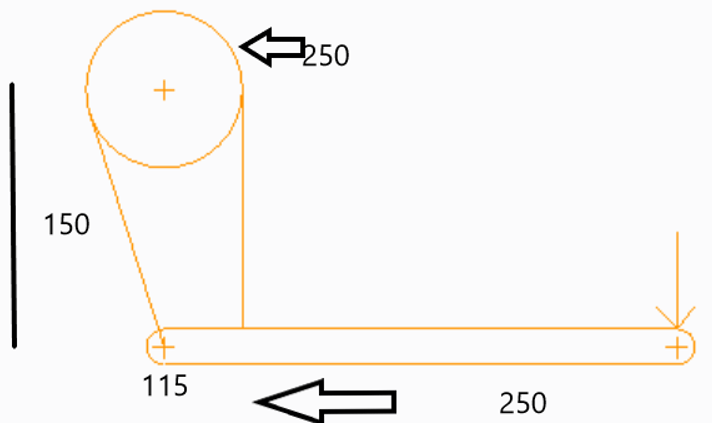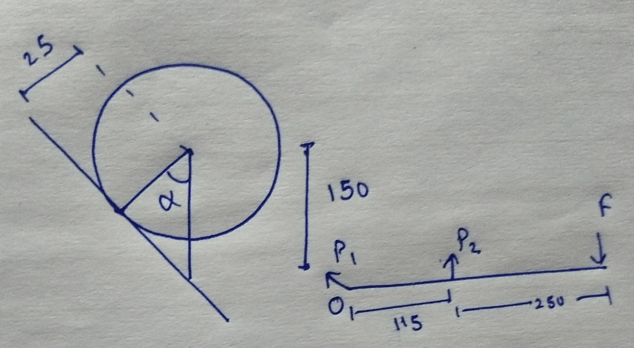This set of Machine Dynamics Multiple Choice Questions & Answers (MCQs) focuses on “Brakes”.
1. Which of the following type of brakes can bring the member to an absolute rest?
a) Hydraulic
b) Electric
c) Mechanical
d) Fluid agitator
View Answer
Explanation: The electric and hydraulic brakes cannot bring the member to rest and are mostly used where large amounts of energy are to be transformed.
2. Electric brakes are used to control the speed of vehicle during downhill travel.
a) True
b) False
View Answer
Explanation: The electric brake cannot bring the member to rest and are mostly used where large amounts of energy are to be transformed, hence retards heavy vehicles during downhill travel.
3. In which of the following brakes the force acting on the brake drum is in axial direction?
a) Block brake
b) Shoe brake
c) Band brake
d) Cone brake
View Answer
Explanation: Block, shoe and band brakes are radial brakes, in these brakes the force acts in the radial direction whereas cone brake is an example of axial brake.
4. The combined mass of bicycle and rider is 100 kg, they are travelling at the speed of 16 km/h on a level road. Diameter of rear wheel is 0.9m. How far will the bicycle travel after the application of brake? The pressure applied on the brake is 100 N and μ = 0.05.
a) 200.1 m
b) 197.2 m
c) 98.6 m
d) 124.3 m
View Answer
Explanation: Ft = μ.Rn = 0.05×100 = 5N
Let x be the distance travelled by the bicycle before coming to rest.
then
Ft.x = mv2/2
x = 100×4.442/(2x 5)
= 197.2m.
5. The combined mass of bicycle and rider is 100 kg, they are travelling at the speed of 16 km/h on a level road. Diameter of rear wheel is 0.9m. The pressure applied on the brake is 100 N and μ = 0.05., find the no. of revolutions made by the bicycle before it comes to rest.
a) 35
b) 140
c) 70
d) 84
View Answer
Explanation: Ft = μ.Rn = 0.05×100 = 5N
Let x be the distance travelled by the bicycle before coming to rest.
then
Ft.x = mv2/2
x = 100×4.442/(2x 5)
= 197.2m
The distance travelled by the bicycle before coming to rest is 197.2m
now, If N is the no. of revolutions then:
197.2 = πDN
197.2/πx0.9 = N
N = 70.
6. If the angle of contact is greater than 60 degrees, then unit pressure normal to the surface of contact is __________
a) Less at the ends than at the centre
b) More at the ends then centre
c) Remains equal at the ends and the centre
d) Remains unaffected
View Answer
Explanation: If the angle of contact is greater than 60°, then the unit pressure normal to the surface of contact is less at the ends than at the centre. For less than 60° the pressure is uniform.
7. Drawback of a single block brake is __________
a) Bending of shaft
b) Twisting of shaft
c) Tension in shaft
d) Tension in bearings
View Answer
Explanation: In case of a single block brake, when it is applied to a rolling wheel, an additional load is thrown on the shaft bearings due to the normal force. This produces bending of the shaft.
8. For a double block shoe brake, the braking action is halved.
a) True
b) False
View Answer
Explanation: Because of the presence of two blocks instead of one, the braking action is doubled, and practically these blocks can be applied with the same force as required for a single brake.
9. The brake shown in figure has a coefficient of friction 0.25 and is to operate using a maximum force F of 500 N. Assume width of the band to be 50 mm. Find the maximum band tension. All dimensions are in mm.

a) 4449.6 N
b) 4440.8 N
c) 5432.4 N
d) 4882.3 N
View Answer
Explanation:

ΣMo = 0
= 115P2 – 365F = 0
P2 = 1586.96N
α = 33.59°
Φ = 270 – 33.59 = 4.126 radians
P1 = 4449.6N.
10. The brake shown in figure has a coefficient of friction 0.25 and is to operate using a maximum force F of 500 N. Assume width of the band to be 50 mm, find the braking torque.

a) 380.2 N
b) 357.8 N
c) 444.3 N
d) 320.3 N
View Answer
Explanation:

ΣMo=0
= 115P2 – 365F =0
P2 = 1586.96N
α = 33.59°
Φ = 270 – 33.59 = 4.126 radians
P1 = 4449.6N
Braking torque = (P1 – P2)D/2
= 357.8 N.
Sanfoundry Global Education & Learning Series – Machine Dynamics.
To practice all areas of Machine Dynamics, here is complete set of 1000+ Multiple Choice Questions and Answers.
If you find a mistake in question / option / answer, kindly take a screenshot and email to [email protected]
- Apply for Mechanical Engineering Internship
- Check Dynamics of Machinery Books
- Practice Aeronautical Engineering MCQs
- Check Mechanical Engineering Books
- Practice Mechanical Engineering MCQs
